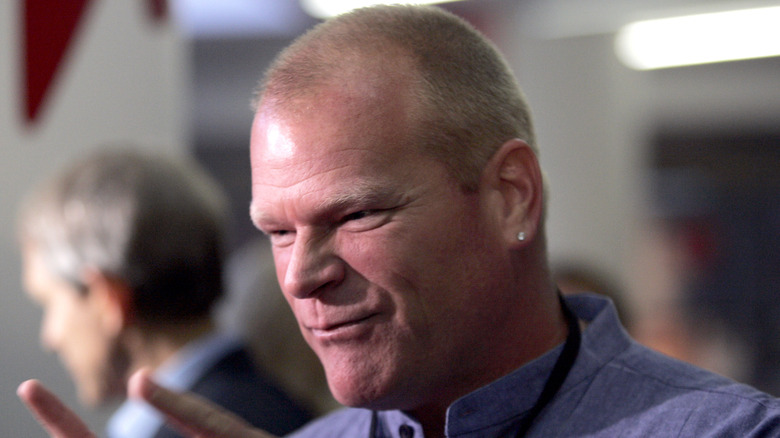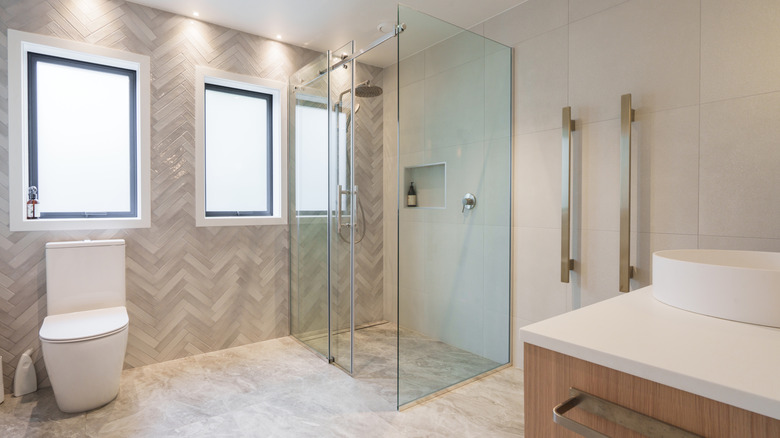Mike Holmes Gives Insight On A Trendy Bathroom Upgrade That's Not As Great As It Seems
We may receive a commission on purchases made from links.
If you're looking for brilliant walk-in shower ideas for small bathrooms to maximize space, you've probably considered curbless showers. But, HGTV's Mike Holmes gives insight into why this trendy bathroom upgrade may not be as great as it seems. These showers, which don't have traditional curbs at the entrance, might be modern and make a small space feel more open, but Holmes warns that there are also downsides to consider.
Holmes doesn't doubt curbless showers can be a great option for some, especially those with mobility issues. However, he wants everyone to weigh the pros and cons before installing one. In a post on his blog, Make It Right, the HGTV star highlighted the biggest downsides to curbless showers: "Without a glass door or lip water can easily splash outside the shower area. ... It is essential to have proper drainage, sloping and waterproofing installation." This will ensure the prevention of moisture and water damage as well as pooling.
The contractor also wants you to think twice about installing a curbless shower if you have young children. If you're working with limited space, installing a curbless shower usually entails giving up having a bathtub. This means there's no bath time for you or your little ones. Holmes added, "That's why I'd only recommend a curbless shower as an option for a second bathroom."
If your heart is set on a curbless shower, here's what you need to consider
Just because we've talked about the drawbacks of curbless showers and why you might want to think twice about putting a walk-in shower in your bathroom, it doesn't mean this shower is a bad idea. In fact, HGTV's Mike Holmes mentioned so many pros to curbless showers, such as being easy to clean, accessible for any age, and they're often space-saving.
So, it's completely okay if your heart is still set on a curbless shower, but there are some things to keep in mind. Being a doorless shower, you won't have much privacy. If you like the idea of a curbless shower, but wish to have more privacy, you could opt for frosted glass panels instead of clear ones. However, design-wise, this could feel less sleek and seamless.
The doorless design could also mean colder showers; while this may be ideal for summer months, that may not be the case for winter. You can consider installing heated floors in your bathroom to combat this, but this option can be quite pricey. A more budget-friendly way to offset this may be installing a towel warmer, like the HEATGENE Towel Warmer, which are often seen in European hotels.

